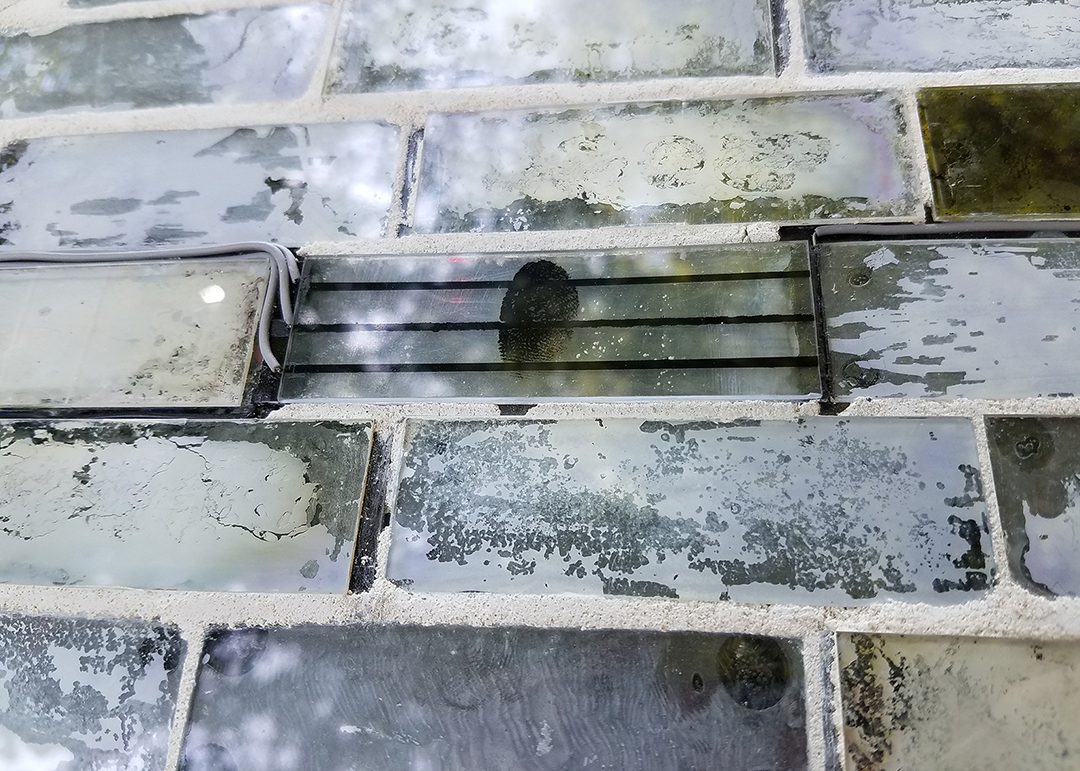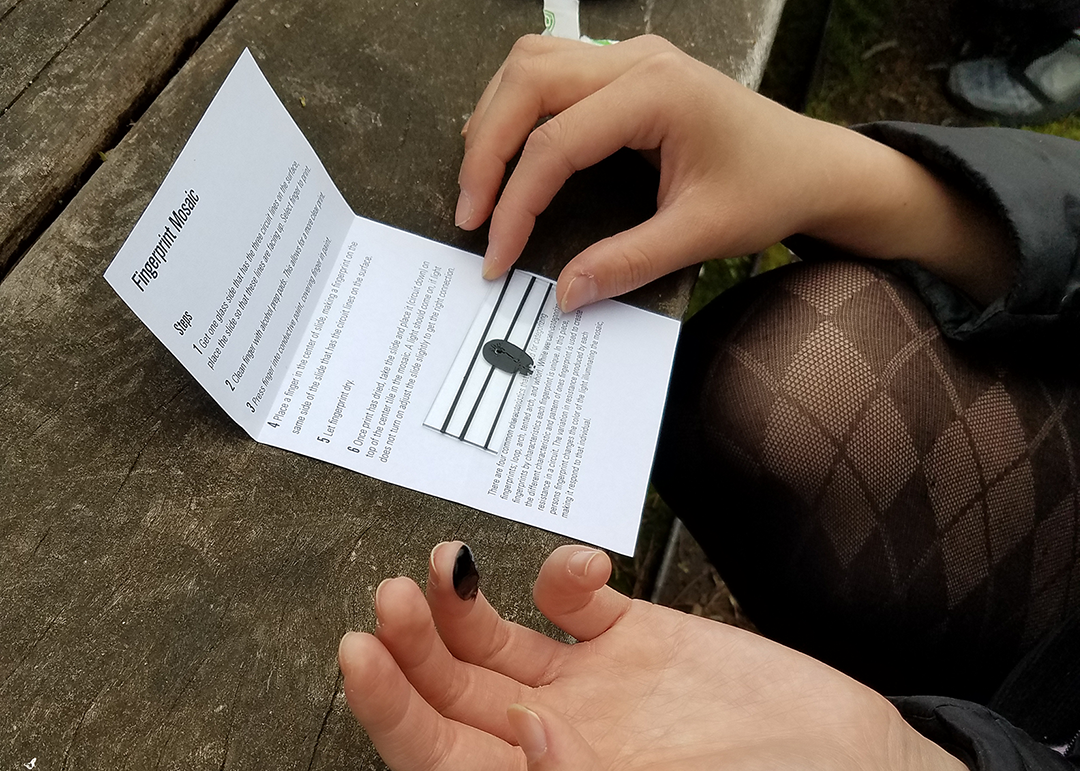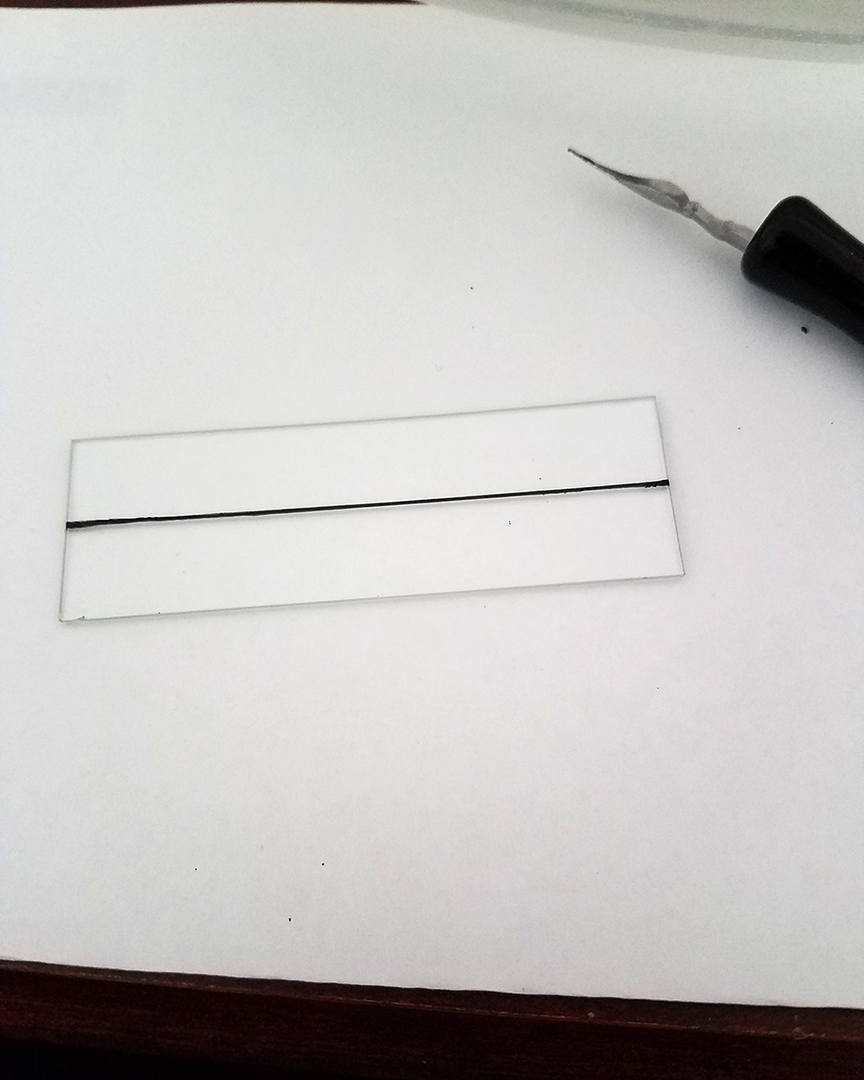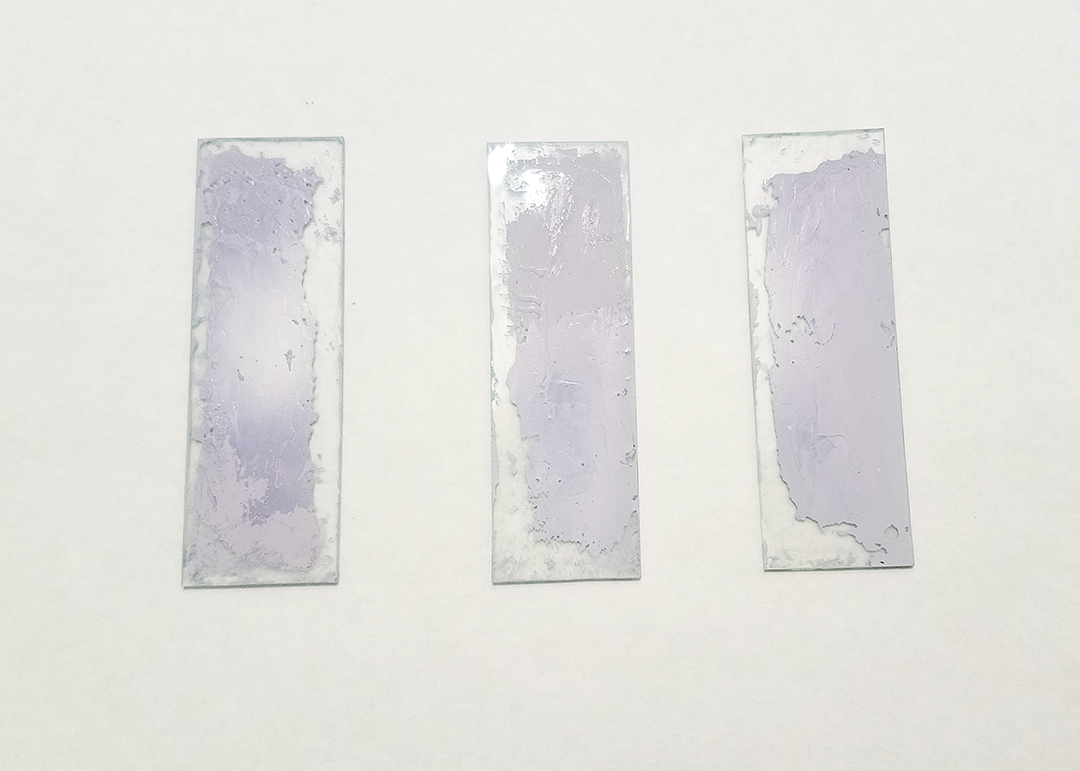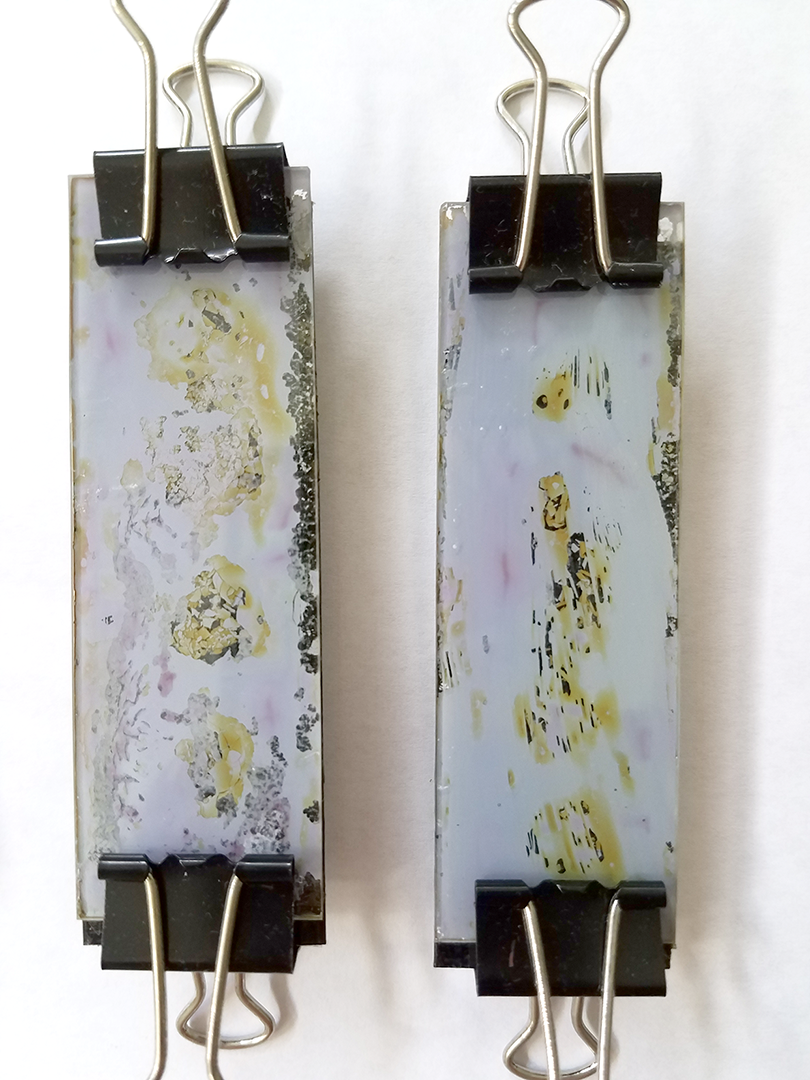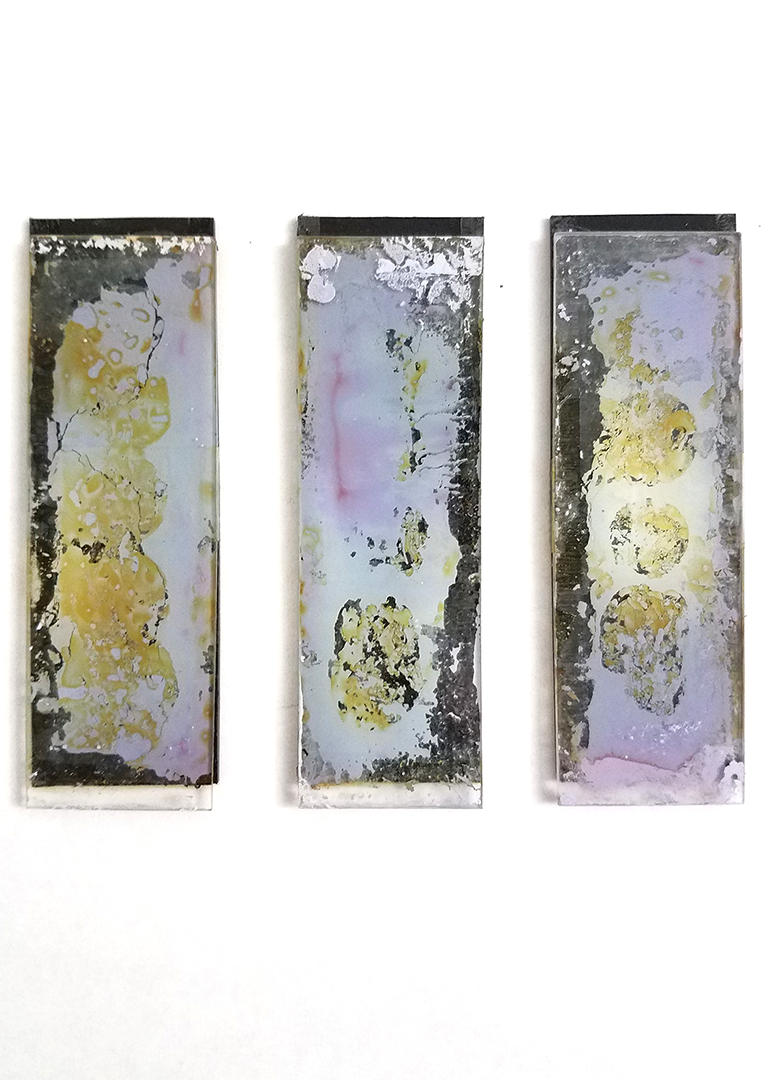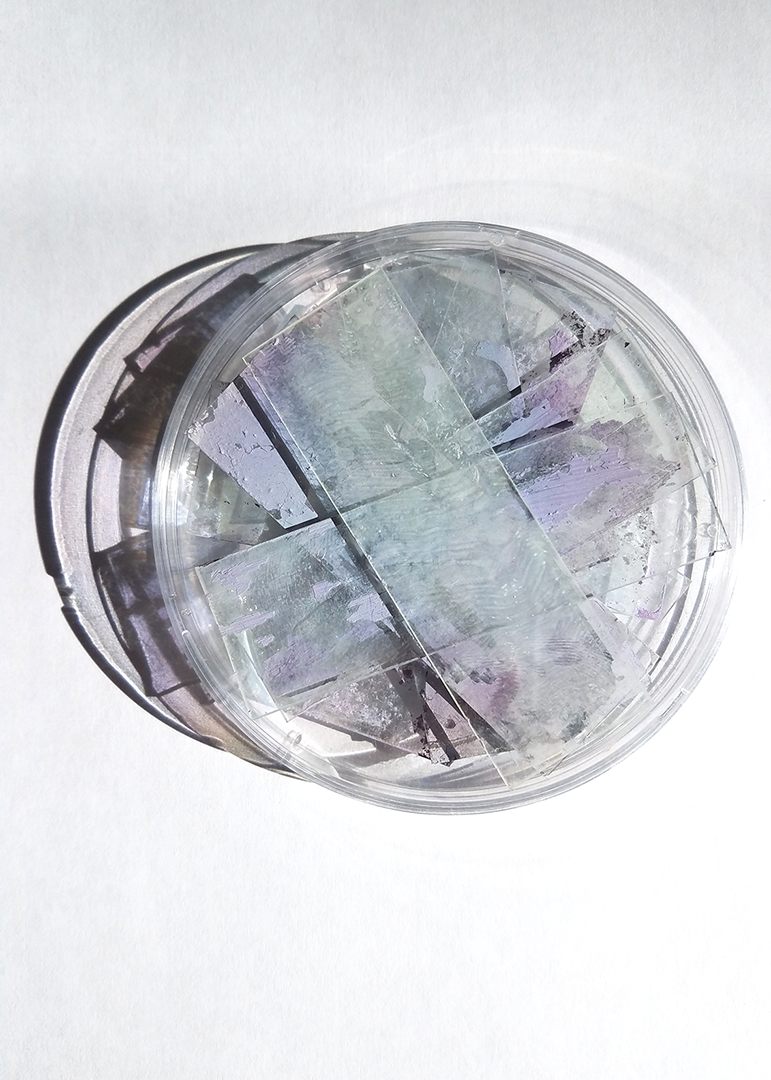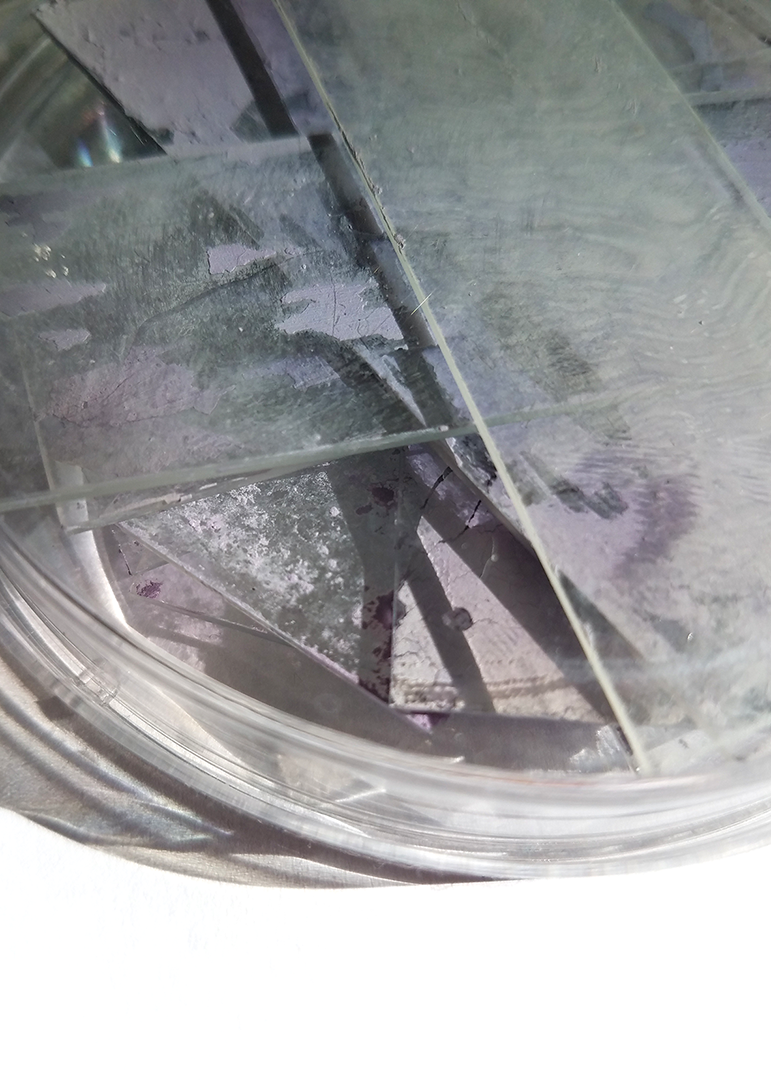Fingerprint Mosaic
Biometric sensor made out of conductive paint on glass, LED Neopixel, grout, failed solar cell experiments
There are four common characteristics that are used for categorizing fingerprints; loop, arch, tented arch, and whorl. While we can categorize fingerprints by characteristics, each fingerprint is unique. In this piece, the different characteristic and pattern of ones fingerprint is used to create resistance in a circuit. The variation in resistance produced by each persons fingerprint changes the color of the light illuminating the mosaic, making it respond to that individual.
Development
The initial goal was to create DIY solar cells. While the project had not been conceptually developed I had the material constraint of fabricating my own solar cells— in whatever form I pleased— and I wanted to utilize conductive paint in my design.After spending a grand amount of time researching DIY solar cells I found feasible protocols and obtained the materials needed.After days and days of experimenting I was left with a bunch of prototypes none of which work, and a large amount of documentation of the process. Fortunately, the prototypes were aesthetically interesting.Given their tile like appearance, I decided to make them into a mosaic that recalls stepping-stones.The second part of the project was the implementation of conductive paint; in it's implementation I wanted to make a piece that was interactive and that would provide a different experience for each individual who interacted with it.Individuality became the theme of the project, leading into research into fingerprints. After researching fingerprints and biometric sensors, I developed a way to create my own biometric sensor using the conductive paint. The outcome of the research and experimentation was a high-low tech interactive garden ornament.
